Author: Marshall Schott
I’ve never been one to give much of a shit about aesthetics. Vanity is vice, in my world. When it comes to food and drink, though, I tend to agree with the old saying, we taste with our eyes first. Admitting this comes not without a fair bit of shame, mind you. It’s true that for many beer lovers, a nice cap of foam resting atop their beer and the residual lace left gripping the glass after taking a sip is something highly desired. I’m not sure anyone would argue that head retention and lacing are directly related to good flavor, but that doesn’t stop most of us from seeking it.
If foam and lace are what you seek, the first place to start is recipe design. We know that certain malts such as CaraPils or using heaps of hops tend to contribute to head retention, while beers falling on either extreme of the ABV scale tend to suffer in the foam department. With that in mind, let’s assume you’ve got a beautiful 6.5% ABV IPA, hopped to holy hell with CaraPils as 5% of the grist, ready to drink. You pour your first bottle or take your first pull from the keg, it’s looking just right, then within seconds the foam disappears. You throw back a few gulps and nothing is left sticking to inside of the glass. Assuming your process was sound, there’s a high likelihood the problem lies not in the beer itself, but the glassware. More precisely, the chemicals you used to clean your glassware may be to blame for your feeble foam.
With some free time on my hands, I set up an exBEERiment (different than an experiment in that it’s not all that official or precise and usually involves the consumption of moderate amounts of alcohol) in which I compared head retention and lacing in glasses “cleaned” with what I believe to be the more commonly used chemicals in the homebrewer’s repertoire:
OxiClean Free
Dawn Liquid Dish Soap
StarSan (I know, not a cleanser)
Hot Water + Cold Rinse
I made an OxiClean Free solution using very hot water then let the glass soak for 5 minutes before removing it and giving it a good hot rinse. The Dawn glass was scrubbed with my clean hand then rinsed for 30 seconds in very hot tap water. The StarSan glass was soaked in a typical solution for 5 minutes and was not rinsed after being removed. The final glass was brand new and had never been washed, I simply hit it with hot water for 45 seconds then rinsed it with cold water until the glass felt cool. All 4 glasses were left to drip dry in a dish rack prior to being filled.
I filled each glass with a tasty Cream Ale within 15 seconds, start to finish.
The differences were noticeable immediately.
A few interesting things you might notice in the photo above is how the beer in the glasses cleaned with OxiClean and Dawn appear mostly still, the beer in the glass soaked in StarSan has a a good amount of bubbles coming from the bottom, and the glass rinsed with hot/cold water has small bubbles clinging to the side.
From another angle, it’s clear to see the foam is acting quite differently in each glass.
After disposing… ahem… of half of the beer in each glass, the differences between each glass became much more apparent.
I was actually surprised the glass cleaned with Dawn had any lacing at all given the amount of pooh-poohing it receives from folks.
I drank the rest of the beer in each glass to get a more objective, scientific perspective.
The results were interesting, to say the least. My initial hunch was that the OxiClean glass would do the best, but really it did about the same as the glasses rinsed with Dawn and water alone. When I initially shared these results, one homebrewing chemist offered the following explanation for what likely led to these results:
“What is happening is the way dish soap works is by utilizing dispersants and surfactants to effectively make water ‘wetter’ by altering the polarity of water molecules and grease (lipids) to lift grease and dirt from the glass. If not properly washed away, these surfactants can leave a residue on the glassware that repel the lipids and protein in the beer’s head, thus no head retention. As far as the StarSan glass having the greatest head retention and lacing, it is due to the inherent nature of StarSan being acidic (around 3 pH) and lightly etching the glass which creates nucleation points for dissolved CO2 to be released and for the sugars and proteins to latch onto as lacing.”
It should be noted this was a rather controversial explanation and that other folks strongly disagreed with him. While I did my best to ensure the glasses soaked in Dawn and OxiClean were well rinsed, perhaps there was still some residual surfactant. In the time since I performed this exBEERiment, I’ve regularly rinsed my glasses following use then threw them in a bucket of StarSan solution, sometimes overnight. Foam and lacing issues are essentially a thing of the past for me.
A quick word of caution to those considering using StarSan for this purpose:
StarSan is an acid that will eventually dissolve most screen printing on glasses!
If you care about the images on your glasses, don’t leave them in the StarSan solution too long. And remember, StarSan is not a cleanser, hence I recommend you give your glasses a good cleansing with hot water after each use and before soaking them in StarSan.
Cheers!
Follow Brülosophy on:
FACEBOOK | TWITTER | INSTAGRAM
| Read More |
18 Ideas to Help Simplify Your Brew Day
7 Considerations for Making Better Homebrew
List of completed exBEERiments
How-to: Harvest yeast from starters
How-to: Make a lager in less than a month
| Good Deals |
10% Off Chapman Equipment ThermoBarrels using code: THINKBEERDRINKBEER03
Brand New 5 gallon ball lock kegs discounted to $75 at Adventures in Homebrewing
ThermoWorks Super-Fast Pocket Thermometer On Sale for $19 – $10 discount
Sale and Clearance Items at MoreBeer.com
If you enjoy this stuff and feel compelled to support Brulosophy.com, please check out the Support Us page for details on how you can very easily do so. Thanks!

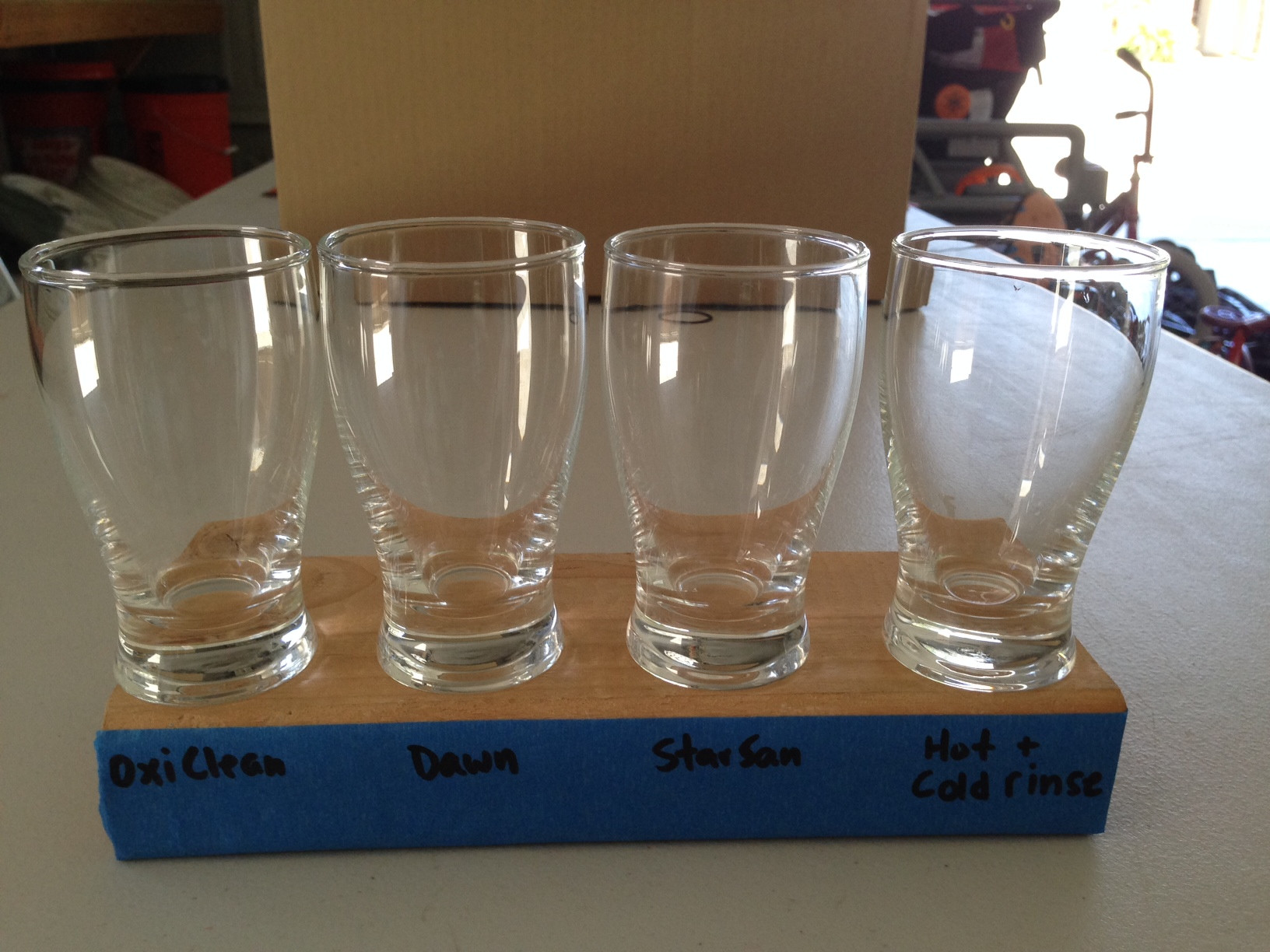
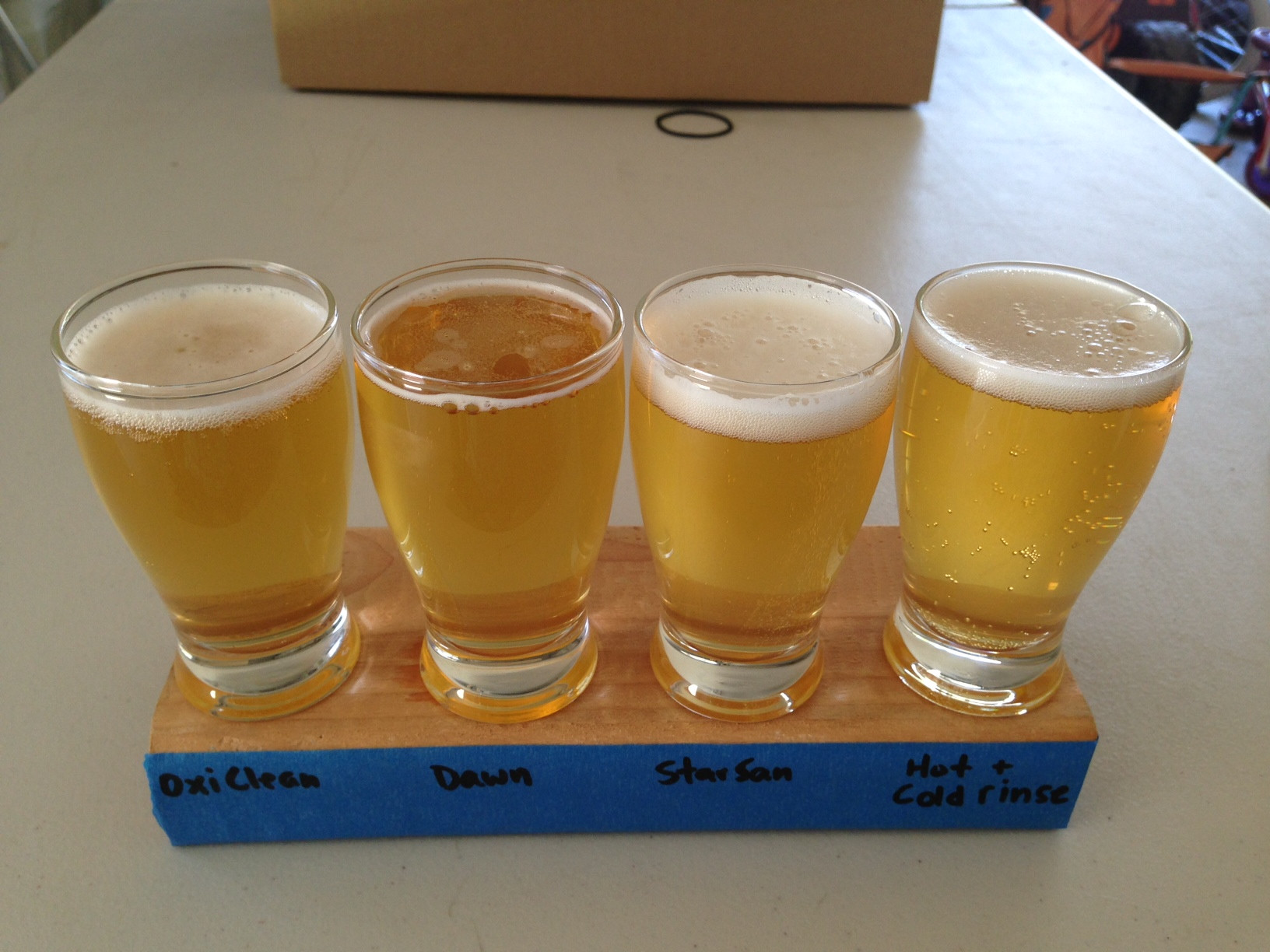
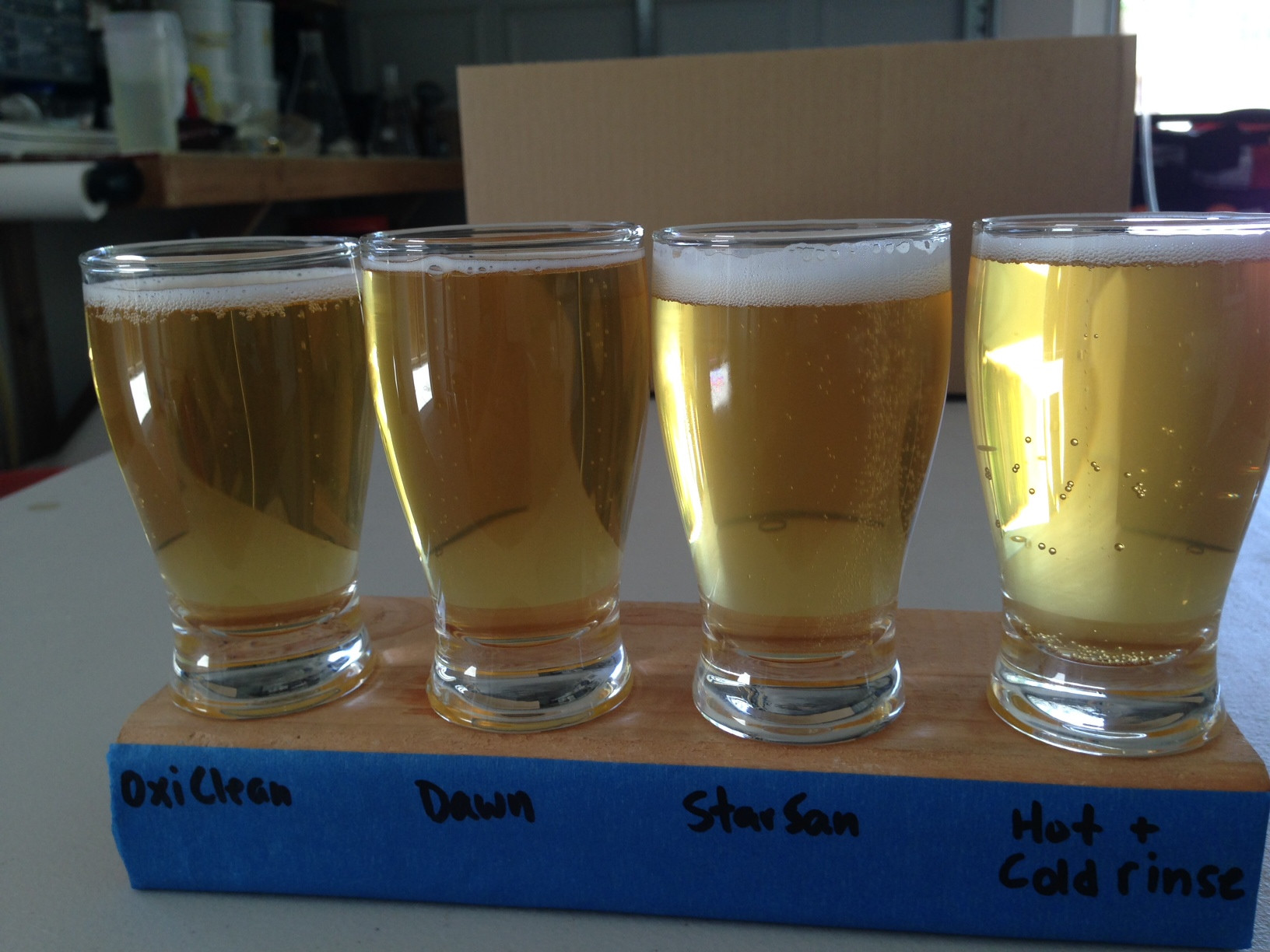
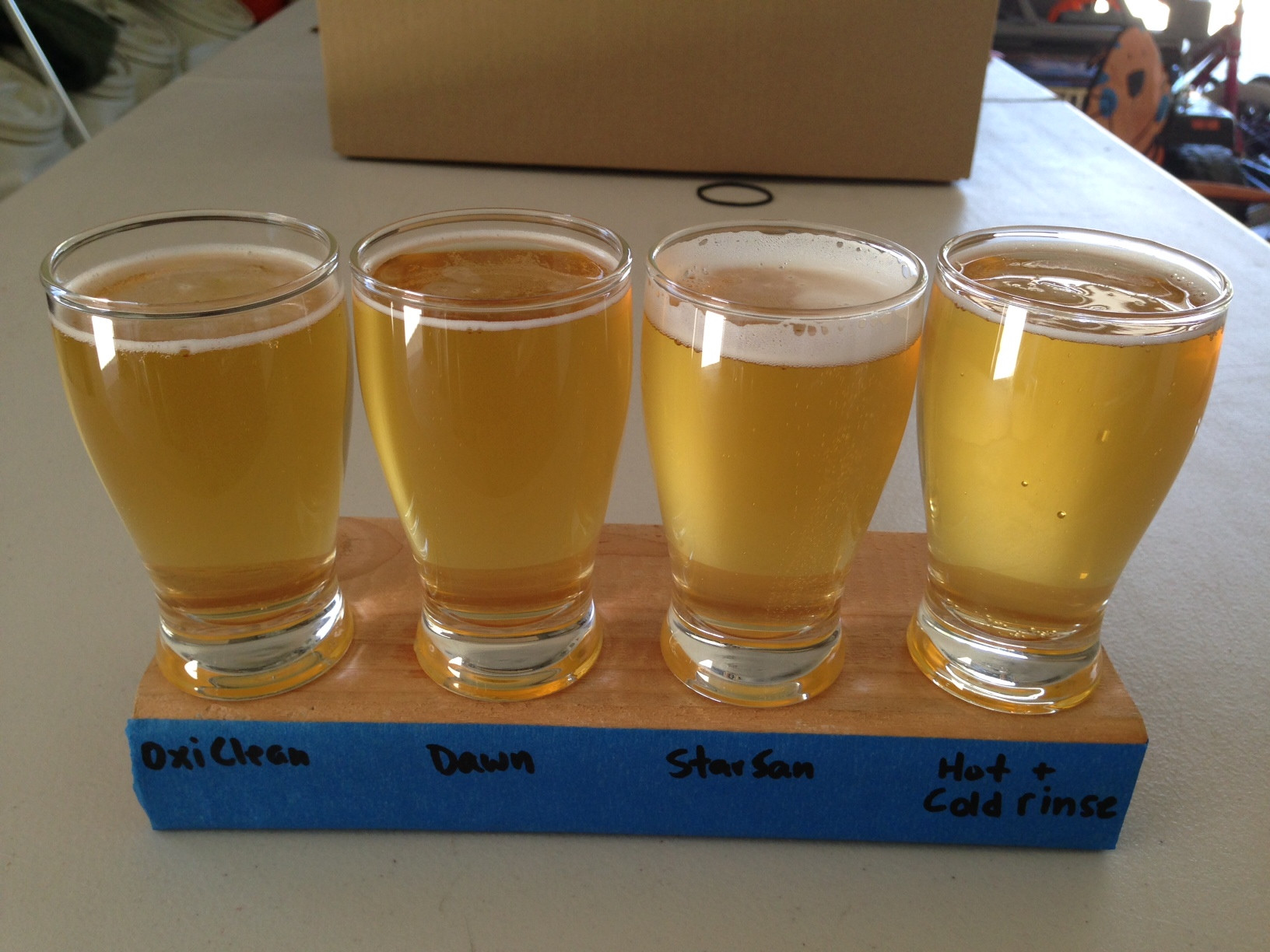
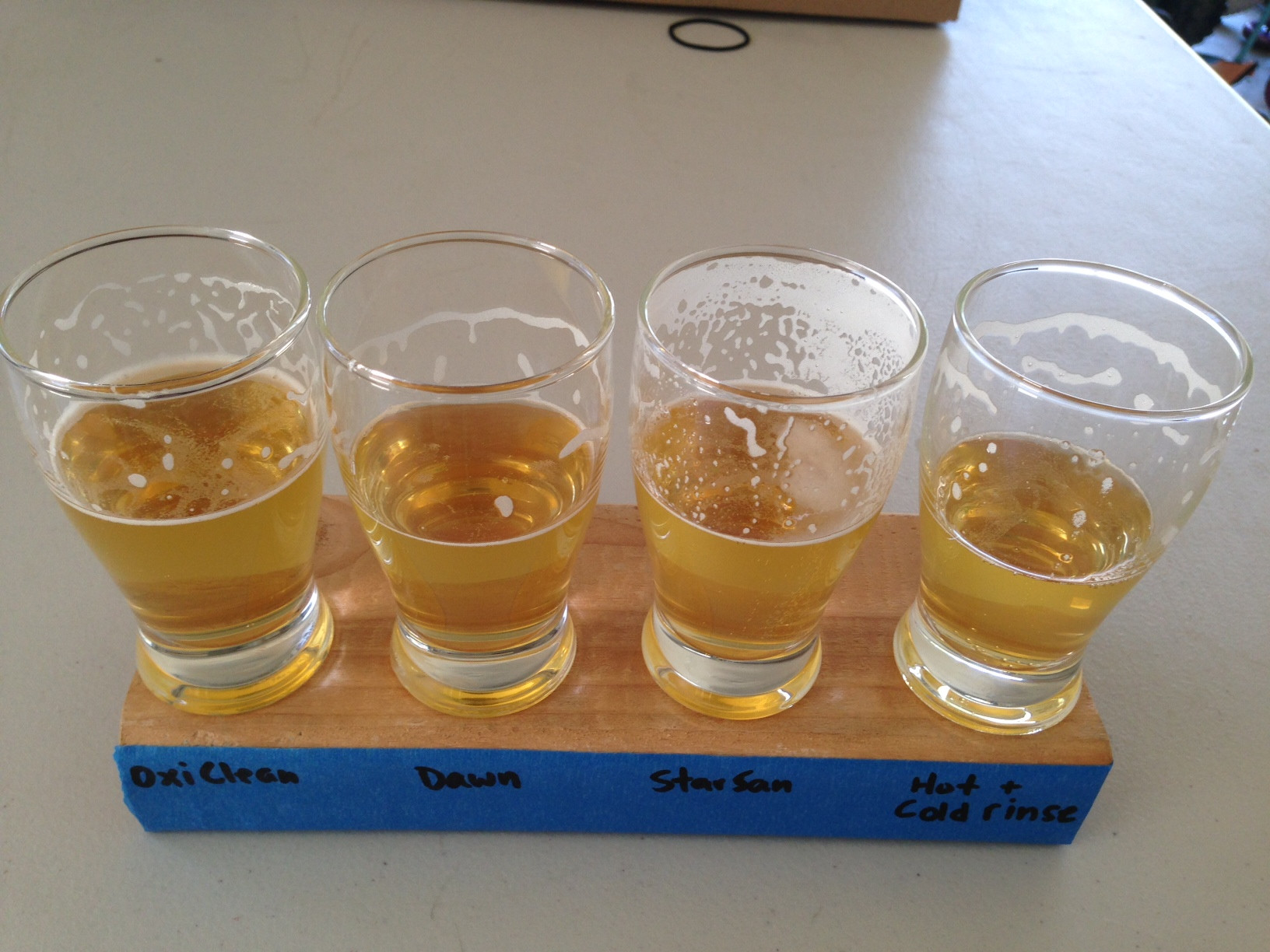
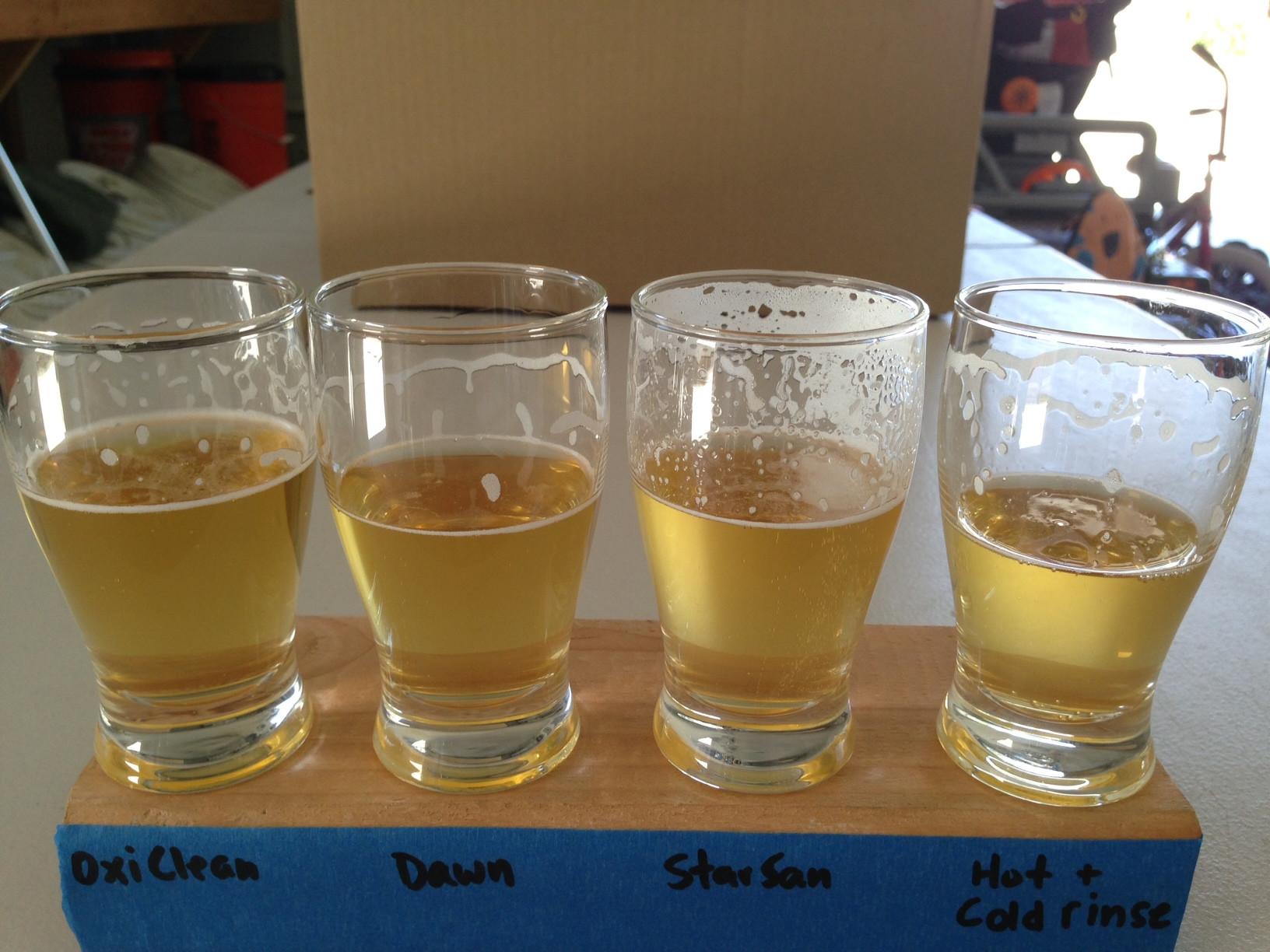
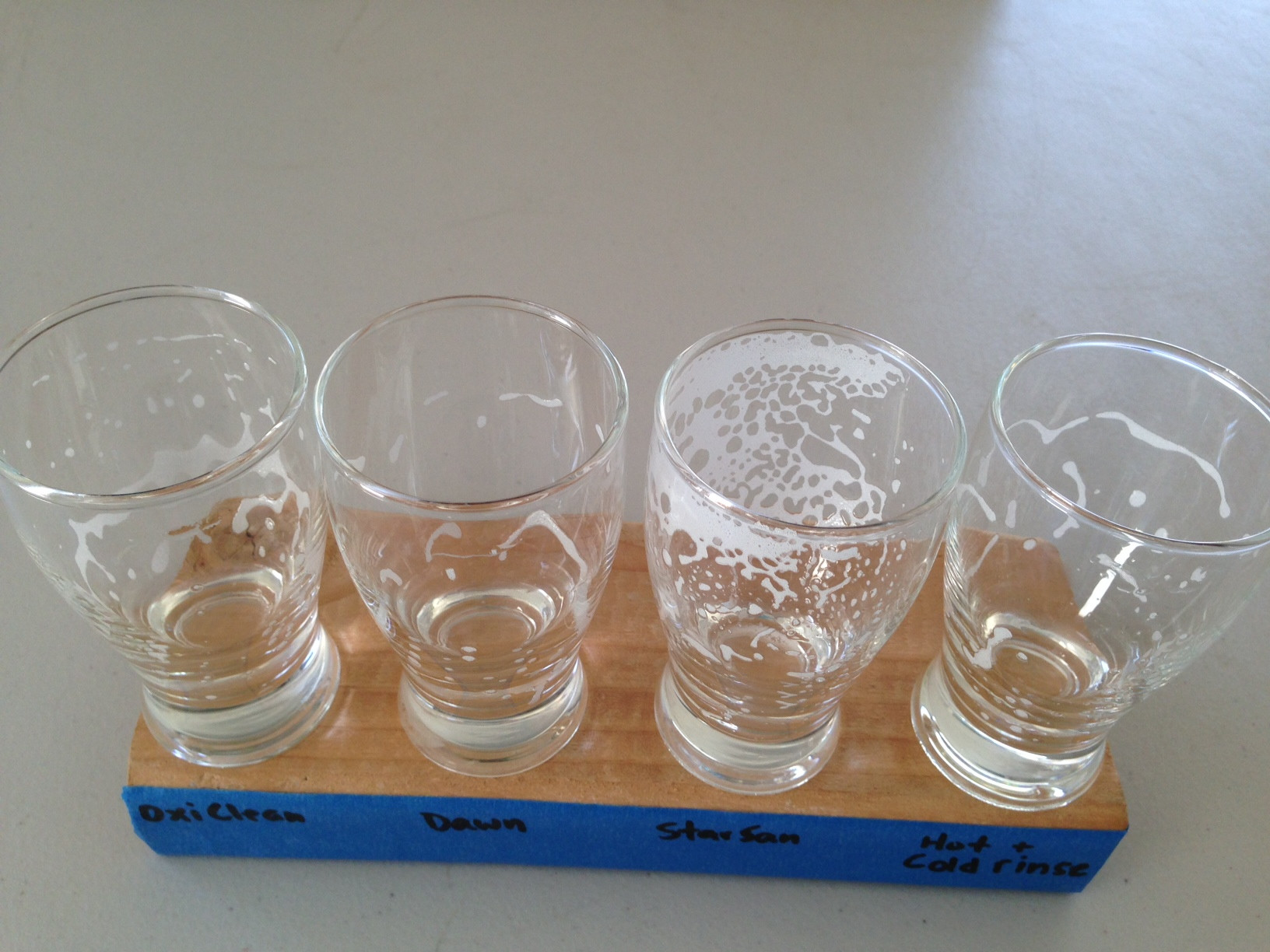
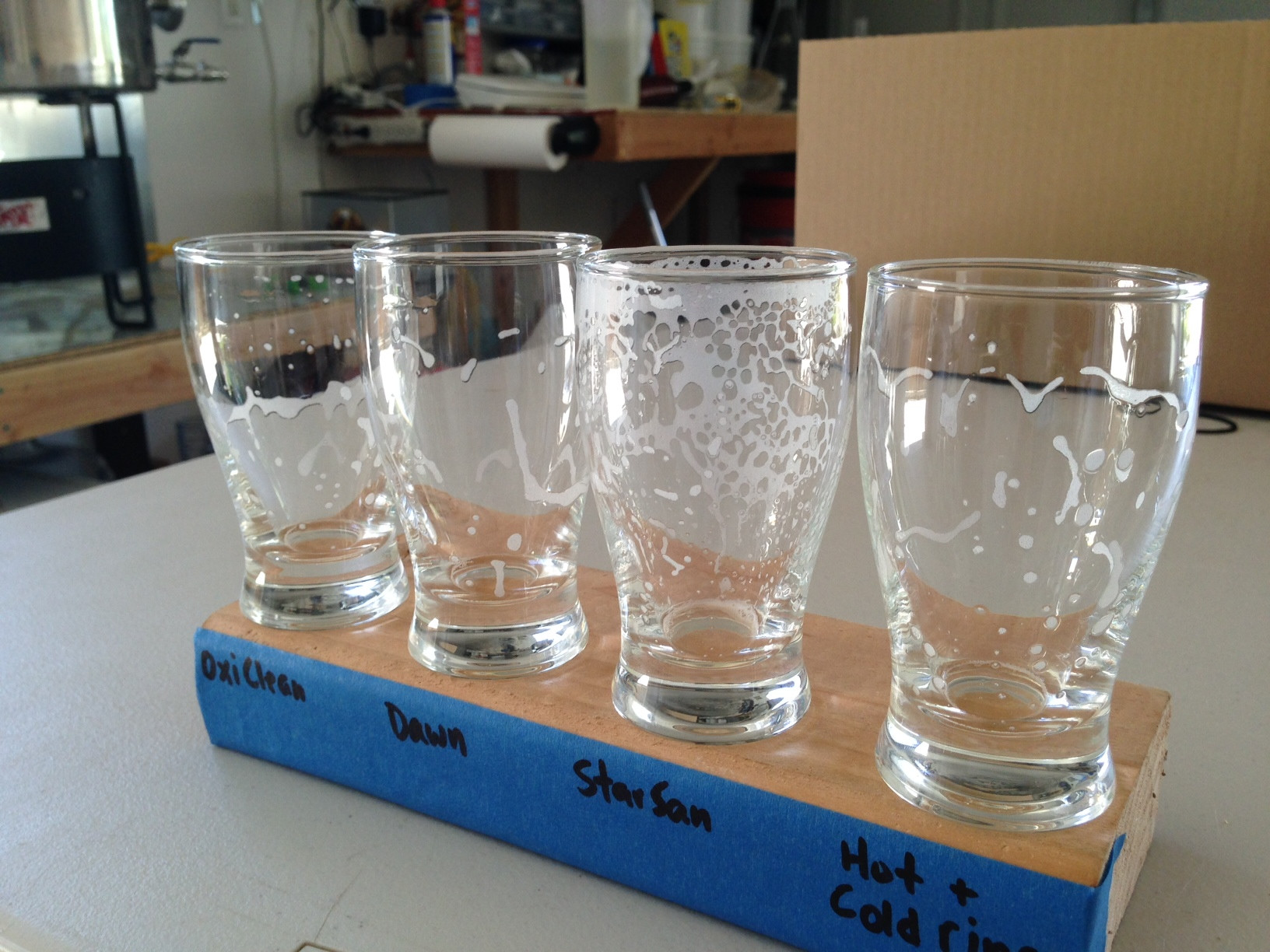








12 thoughts on “exBEERiment | Impact Different Glass Cleaners Have On Beer Foam”
Nice article. Very curious results. Star san is actually a pretty mild acid at instructed dilution, the same ph as many wines. It is certainly not acidic enough to oxidize glass.
Good to get the print off those Rogue and Stone Bottles if you want to re-use them though!
I’ve been having trouble getting head. On my beer, on my BEER.
I think the problem is our ion exchange water softened well water. TDS about 380. Mostly salt. I think that it’s leaving a salt residue on our glassware that’s killing the head.
If I wash and rinse the glasses in softened water and drain, then rinse with RO water from a vending machine (TDS 16) and let drain dry, BINGO, great head and super lacing.
Great post, just now got to this one.
Which glasses do you use for your tests? I have been looking to get a set of these for my personal taste tests with friends. I looked for similar ones on amazon but were almost $10 per glass.
Cheers!
For the xBmts, I started using red solo cups a few months back, as I don’t want what one sees biasing what they smell and taste.
I still prefer a hot/cold rinse. I emulate a bar rinser by turning my sprayer upside down and the water flows down all sides of the glass. Never, ever have residue bubbles left in it.
A little baking soda and hot water with a hot water rinse leaves a squeaky clean glass and good head retention and lacing.
I’m using a glass rinser with water pumped from a tank in the kegerator. Would it be an idea to add a little Star San to the water, or must the glass be soaked in Star San to get any effect?
That could be pretty awesome. Do you have a glass rinser like in most German bars? If so, I would love to see how you rigged this up, because I would love to have that feature on my own keggerator.
I do. 🙂
I’ve used this drip tray: http://www.beveragetime.com/product-categories/beer-drip-trays-glass-rinsers/20__ss_drip_tray_with_glass_rinser/
The water is pumped from a small tank in the kegerator by a diaphragm water pump with pressure switch, like the ones used in boats and RVs: http://www.ebay.com/itm/400757276688
The result looks like this:
http://tapcooler.no/images/products/3-tapcooler-s6-pilotserie-1.jpg
https://forum.norbrygg.no/attachments/uploadfromtaptalk1422821720244-jpg.16660/
It’s actually the easiest part of the kegerator setup.
Hey Marshall…I realize this is an old experiment, but I have been wondering about head retention and phosphoric acid…do you think the glass rinsed in StarSan had more foam/ lacing not because of its sanitizing properties, but because of the phosphoric acid in it? I would use this instead of lactic acid for my water if it provides the additional benefit of better head retention. Thanks in advance for reading…cheers!
Let me start by stating my credentials.
I have been home brewing for 12 years.
I have 15 years experience working in draft beer dispense installing systems in restaurants, bars, and breweries.
Our company also manufactures commercial hospitality cleaning products and installs and services glassware and dish cleaning machines, as well as a full line of brewery cleaning products.
We teach our customers and clients about “beer clean” glassware and set our equipment up to produce those results.
The reason star-san produced those results may in fact be due to your water chemistry. If you have hard water then the acid may help to solubilize the minerals and reduce deposits. A similar result could be achieved with a rinse agent which will contain an acid and sheeting agent.
Additional note… Star-Dan contains 15% Dodecylbenzynesulphonic acid, an anionic surfactant (that’s what produces the foamy character) …so it is also a cleaner to some degree.
Best results for glassware would be wash with an alkaline product (oxi-clean/PBW/detergent would work), then rinse with an acidic rinse agent to prevent mineral film, and finally, rinse with clean cold potable water before pouring.